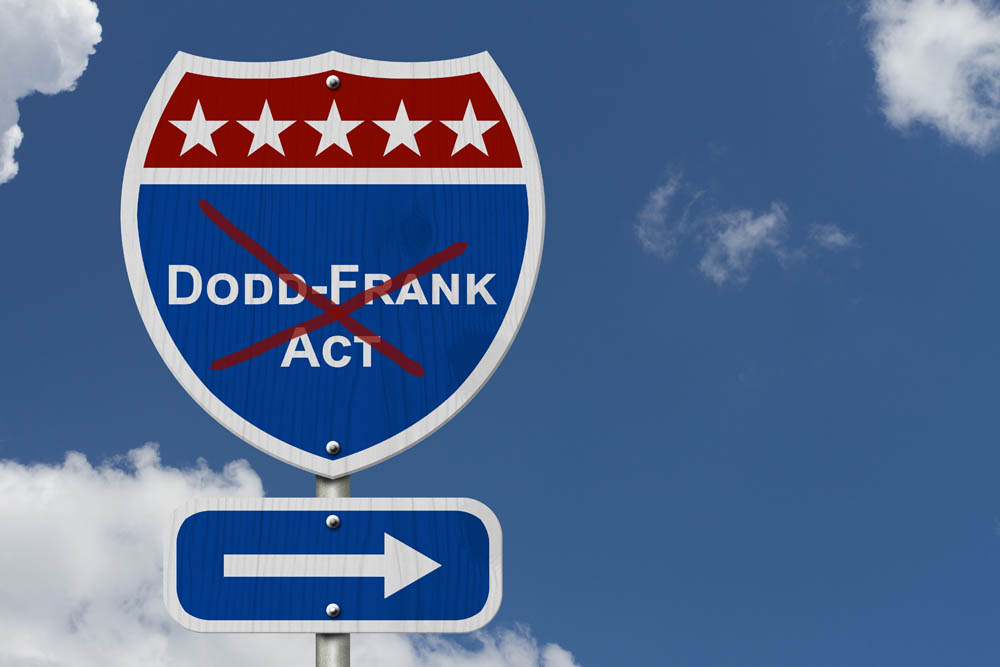
Dodd-Frank Rollbacks – Good For Real Estate But Is The Door Open For Bailouts?
Last week, the House of Representatives passed, and the President signed, The Economic Growth, Regulatory Relief and Consumer Protection Act (S.2155). The Act rolls back several provisions of The Dodd-Frank Act, the law that was enacted to regulate banks following the financial crisis to help assure that tax payers would not have to bail out banks again. With the economy continuing to strengthen, smaller banks have argued that the tight regulations imposed by Dodd-Frank have made it difficult to compete. Wall Street concurs and argues that loosening restrictions would generate growth in underserved areas allowing community banks and credit unions to free up capital to lend to smaller borrowers who might not otherwise qualify for loans from larger banks.
The Act removes stress test requirements for banks with assets of less than $250 billion. This provision alone should help consumers in rural areas because credit will free up for community banks and credit unions according to Redfin chief economist Nela Richardson. Lawrence Yin, NAR chief economist expects that there will be a rise in regional construction because small, local home builders will be more likely to obtain construction loans from community banks.
The Act is getting praise across the board from the real estate industry. But there is concern that the Act opens the door to the old practices that brought about the crises in 2008. The “Volcker Rule”, which prohibits financial firms from investing proprietary funds, was eliminated for banks with less than $10 billion in assets. This could cause banks to lose federally insured money on risky investments. Fannie Mae and Freddie Mac are now required to consider alternative credit scoring models. This could open the door to loans to borrowers who don’t have the ability to repay loans. Small banks are exempt from certain disclosure requirements. Redfin’s Richardson says that this could lead to racial inequality in lending.
The result of the Act is that only the 10 biggest banks in the country remain subject to full federal oversight. House Minority Leader Nancy Pelosi (D-CA) says “it’s a bad bill under the guise of helping community banks”. Pelosi said that the Act will take us back to the pre-meltdown days.
The biggest critic of the Act and the biggest advocate of banking reform, Senator Elizabeth Warren (D-MA) said the bill would “bail out big banks again” and would increase the likelihood of taxpayer bailouts. Senator Warren argued that the Act exempts 2 dozen financial firms with assets from $50 billion to $250 billion from the strictest rules imposed by Dodd-Frank. These banks received billions of dollars in bailouts and should not have oversight relaxed says Senator Warren. Although she supports helping community banks, Senator Warren believes the Act goes way too far.
However, the Congressional Budget Office report says that the relaxation of the regulations creates a “slightly greater risk” of another crash and bailout”. Currently, CBO says, we are at only a “small risk”. Barney Frank, one of the authors of Dodd-Frank says that there is “nothing” in the legislation that damages the regulations intended to curb risk taking by large banks. Those regulations were not weakened for the largest banks. While Frank believes the $50 billion threshold is too low and the $250 billion threshold is too high, the overall risk of harm caused by the new Act is low.
It might be too early to understand the overall effects of the new Act, but it appears that more money will be infused into real estate. If the Act is not the fore runner to further loosening of Dodd-Frank restrictions which allow reckless practices, then the Act could be a good thing. However, if it is used as a crack that Wall Street uses to burst through to fully de-regulate and return banks to the days of the Wild West, we need to be vigilant.




No Comments
Sorry, the comment form is closed at this time.